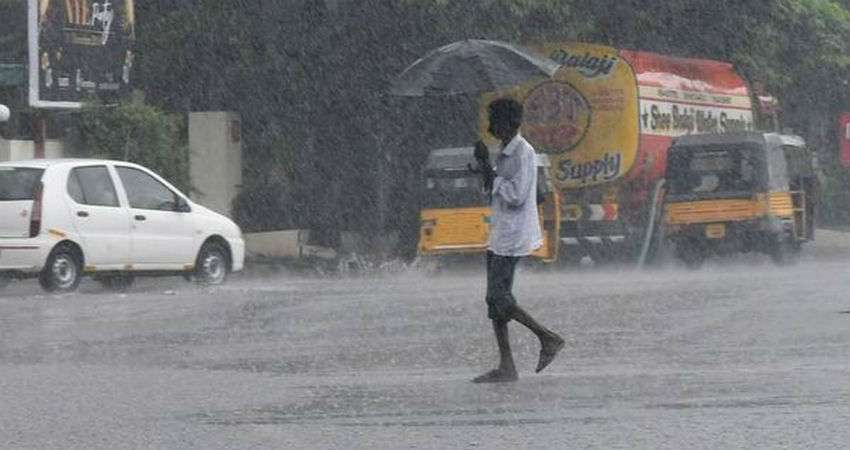 Unexpected and intense rainfall took the city of Chennai by storm, causing widespread disruption for approximately three hours starting at 6 pm on Wednesday. The heavy downpour resulted in severe traffic congestion and extensive flooding on the roads. During this period, the city received an average of 10 cm of rain, with Meenambakkam recording an even higher 20 cm. In contrast, Manali experienced the lowest amount at approximately 7.8 cm.
Unexpected and intense rainfall took the city of Chennai by storm, causing widespread disruption for approximately three hours starting at 6 pm on Wednesday. The heavy downpour resulted in severe traffic congestion and extensive flooding on the roads. During this period, the city received an average of 10 cm of rain, with Meenambakkam recording an even higher 20 cm. In contrast, Manali experienced the lowest amount at approximately 7.8 cm.
Impact on Transportation and Infrastructure
Reports of submerged subways, water-logged roads, and residential areas surfaced as the rain continued. Chief Minister MK Stalin promptly directed bureaucrats and elected representatives to visit affected localities and initiate relief efforts.
HR&CE Minister P K Sekarbabu and Mayor R Priya actively participated in inspecting and overseeing the rescue operations. In response to the situation, school holidays were declared in Kancheepuram and Tiruvallur, while colleges in Tiruvallur district also suspended classes. Suburban train services on Tambaram and Tiruvallur routes experienced cancellations and delays, further compounding the transportation woes.
Traffic Disruptions
Traffic crawled on most roads, with five subways—Gengureddy, Perambur, Duraisamy, Nungambakkam, and Aranganathan—experiencing inundation. The Tambaram railway subway faced a similar fate. However, by 10 pm, all subways and thoroughfares were cleared of water-logging.
Severely Affected Areas
Several areas, including Bazullah Road, North Usman Road, Mandaveli Bus Stand, Haddows Road, OMR, and North Chennai neighborhoods such as Perambur and Vyasarpadi, bore the brunt of the rainfall. In places like Padi and Anna Nagar, homes faced water ingress.
In just one hour, Kolathur received 6.2 cm of rain, Ambattur 6 cm, Ennore 4.5 cm, and certain central Chennai areas 3 cm. The rain exacerbated traffic congestion on OMR for hours, leading to significant delays for motorists.
Government Response and Ongoing Concerns
GCC Commissioner Dr. J Radhakrishnan stated that the chief minister had instructed officials to remain in the field, ensuring continuous operations in low-lying areas throughout the night. Inundation in core city areas like T Nagar and Nandanam was attributed to the inability of water to flow from Mambalam and Nandanam canals into the Adyar River, heightened by the heavy flow from Chembarambakkam.
Weather Forecast and Alerts
The Indian Meteorological Department (IMD) issued an orange alert for the city and neighboring districts, anticipating heavy to very heavy rainfall over the weekend. The intensification of a weather system into a well-marked low-pressure area could potentially escalate into a cyclonic storm.
S Balachandran, Deputy Director General at IMD, explained that the previous day’s rainfall was influenced by a cyclonic circulation over Sri Lanka and nearby regions. The well-marked low-pressure area over the southeast Bay of Bengal was predicted to move west-northwestwards, potentially evolving into a depression by Thursday and further intensifying into a cyclonic storm around December 2 over the southwest Bay of Bengal.
Extended Rainfall Forecast
Tamil Nadu faced the likelihood of rainfall with thunderstorms until December 3. Over the next 48 hours, moderate-intensity rainfall, along with thunderstorms and lightning in certain areas, was anticipated for both the city and its suburbs.
Despite the recent downpour, Chennai has recorded 504.1 mm of rainfall since October 1, which is 21% below normal. Tamil Nadu, as a whole, has registered 319.4 mm of rainfall, representing an 8% deviation below the normal average. The situation continues to be closely monitored as the region prepares for potential further rainfall and adverse weather conditions.
Preparedness and Safety Measures
As the city grapples with the aftermath of the recent deluge, authorities are actively implementing precautionary measures to mitigate future challenges. The focus is on bolstering infrastructure resilience and enhancing emergency response strategies.
Infrastructure Upgrades
In light of the vulnerabilities exposed during the heavy rainfall, there is a renewed emphasis on upgrading the city’s infrastructure. Drainage systems and canal networks are under scrutiny, with plans for expansion and improvements to facilitate smoother water flow during adverse weather conditions.
Community Engagement and Awareness
Community participation is deemed crucial in navigating such weather-related crises. Initiatives to raise awareness about safety protocols during heavy rainfall, including the dissemination of emergency contact information, are being intensified. This collaborative approach aims to create a more resilient and informed populace.
Real-Time Monitoring
To enhance preparedness, real-time monitoring of weather patterns and river water levels is being implemented. This proactive approach enables authorities to anticipate potential flood-prone areas and deploy resources effectively, minimizing the impact on residents and commuters.
Eco-Friendly Urban Planning
In the long term, there is a growing recognition of the need for eco-friendly urban planning. Green spaces and sustainable landscaping not only enhance the aesthetic appeal of the city but also contribute to better water absorption, reducing the risk of flooding during heavy rainfall.
Economic Impacts
The recent bout of torrential rain has undoubtedly left its mark on the local economy. Disruptions in transportation, commerce, and daily activities have prompted a closer look at developing strategies to minimize economic losses during weather-related events.
Business Continuity Plans
Businesses are revisiting and fortifying their business continuity plans to ensure minimal disruptions during adverse weather conditions. Remote work policies, contingency measures, and flexible scheduling are among the considerations to maintain operational efficiency.
Future Weather Outlook
As the region remains on alert due to the forecasted weather system, authorities are closely monitoring developments. Timely communication of weather updates and potential risks will play a pivotal role in ensuring public safety and preparedness.
Collaboration with Meteorological Agencies
Collaborative efforts with meteorological agencies are being strengthened to enhance the accuracy of weather predictions. This collaboration aims to provide the public and relevant authorities with reliable information, allowing for better planning and response.
Conclusion
While Chennai copes with the consequences of the recent rainfall, the city is gearing up for a proactive and collaborative approach to future weather challenges. The combination of infrastructure upgrades, community engagement, real-time monitoring, eco-friendly urban planning, and economic resilience measures will contribute to a more resilient and prepared Chennai in the face of unpredictable weather events. As the city moves forward, the lessons learned from this experience will serve as a foundation for building a safer and more sustainable future.





